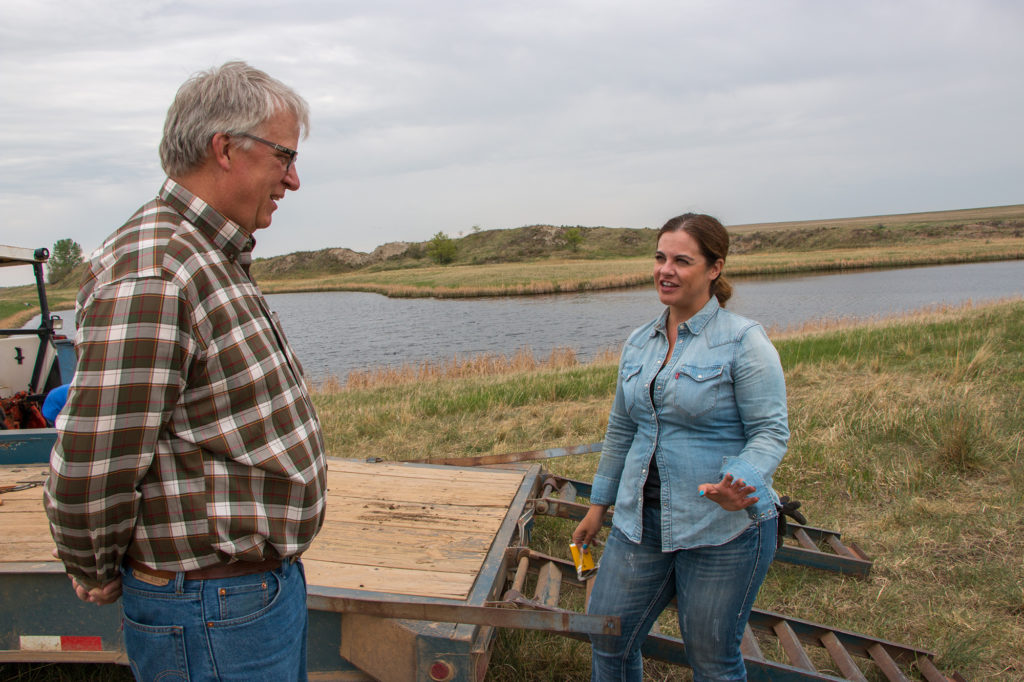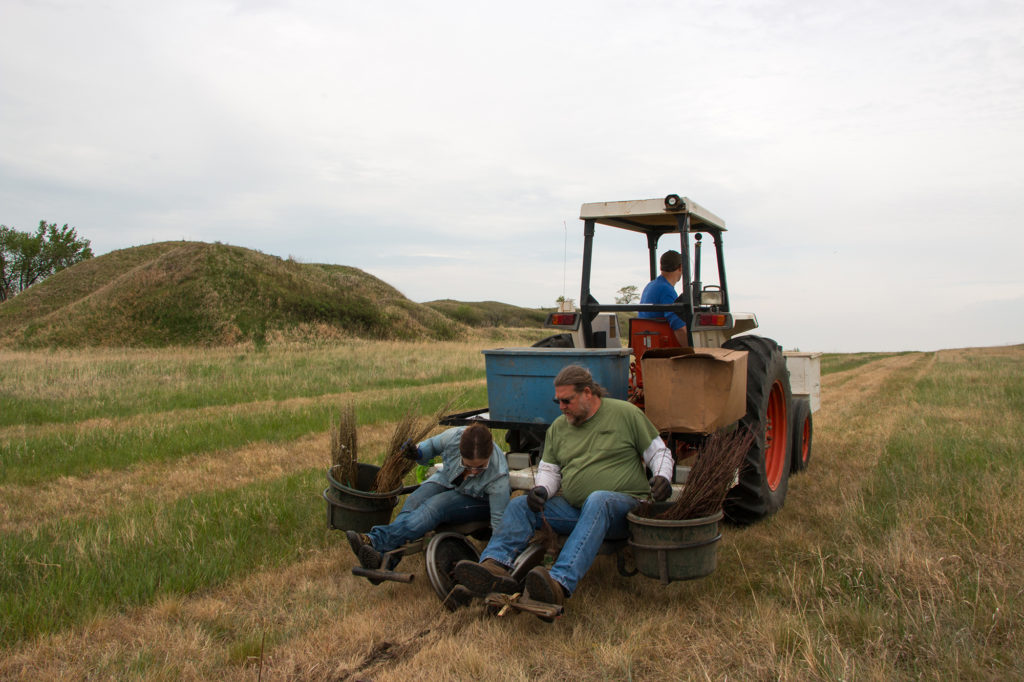
North Dakota is a prairie state, but an electric cooperative project is helping establish stands of trees and shrubs across several counties to enhance wildlife habitat and expand ecological diversity.
Basin Electric Power Cooperative is working with landowners, local governments and state agencies to plant sustainable patches of trees and shrubs in five western North Dakota counties. The Bismarck-based G&T is committed to meeting vegetation replacement obligations related to major transmission projects completed in late 2017.
“The state requires that we inventory the trees and shrubs removed from our right-of-way and replace them, two-for-one,” said Cris Miller, senior environmental administrator for Basin Electric. “About one-third of the affected landowners requested trees and shrubs to be replaced on their property outside of the transmission right of way.”
That means the remaining trees and shrubs are available for planting projects within public spaces. Some of those projects include landscaping around ballparks, picnic sites and local parks. Thousands of trees and shrubs are being planted on undeveloped public lands, including parcels managed by the North Dakota Game and Fish Department.
One Big Job and Lots of Little Sites
The G&T sought approval of 225 miles of new 345-kilovolt transmission to serve Bakken Formation oil and gas development, and the North Dakota Public Service Commission stipulated vegetation replacement with three years of monitoring. Trees and shrubs that don’t survive may require replacement.
“This ultimately involved 37,000 trees and shrubs,” said Miller. “Affected landowners had the first opportunities to replace trees on their property outside of our transmission corridors.”
Miller added that many of those landowners opted for border patch plantings between field acreage sections. Those stands of trees and shrubs are commonly seen along the edges of fields and pastures and serve as natural windbreaks and shelter for wildlife.
The patches, roughly 30 feet wide, are designed to provide cover and help meet the nutritional needs of indigenous songbirds, migratory fowl and upland game species such as pheasants and grouse. The white-tail and mule deer inhabiting the area will also benefit.
After identifying planting opportunities, Basin Electric relies on the County Soil Conservation District’s expertise to select the trees and shrubs that have the best opportunity for survivability based on the soil types present and achieve the intended purpose of the planting.
Fauna Friendly

About two-thirds of the total planting stock was made available to public agencies, including some who tapped the resource to enhance habitat near recreational space and reclaimed mining sites.
“You’ll see a lot of smaller shrubs, denser planting to provide food source and shelter for animals,” said Sarah Tunge, manager of the Mercer County Soil Conservation District. The district began planning for the two Mercer County projects in January, and plantings there took place in late May.
“We worked with North Dakota Game and Fish on this one to provide the most benefit. We looked at water sources and other habitat in the area,” said Tunge. “Deer, grassland birds, pheasants, song birds of all types, pollinators, are all going to use this new habitat.”
And it shouldn’t take long to see results. Tree species selected for bare-root planting top out at about 12 feet in height because naturalists involved in the planning aren’t interested in providing roosts for raptors.
Reshaping the Landscape
The Harmony Lake site is a former surface coal mine that predated the current state’s strict surface mine reclamation regulations. The 45-acre lake is surrounded by 450 acres of restored prairie and wetlands.
Reclamation work began in the area in 1998, and the ownership of the area was transferred to the state and opened for recreational use in 2003. At least 17 species of wildlife live in the area. Previous plantings at the site were completed to obscure and cover spoil piles left over from early surface mining operations.
“Wildlife actually like the spoil pile areas, so these trees will add to their habitat, and they will make a snow trip to keep the snow from filling in those spoil piles,” said Arvid Anderson, a resource biologist with North Dakota Game and Fish Wildlife.
Dense growth on the spoil piles will provide cover for deer and other wildlife moving between open areas, said Anderson. “It makes for better aesthetics for the public driving by, as well.”
More Work Ahead
On each of the projects, Basin Electric picks up the costs of all plantings, and the native trees and shrubs stock used are purchased from a state-owned nursery in order to ensure their hardiness. Weed barrier fabric is also laid out around the planting zones to discourage grassland encroachment while the bare-root trees and shrubs get established.
Cold, wet spring weather compressed 2018’s available planting schedule to just three weeks. Work began in late May and was suspended in mid-June.
An assessment survey of planted sites is expected to take place in September, but Basin Electric is already preparing for a series of projects with the North Dakota Department of Transportation for 2019.
The highway beautification effort will provide a visual barrier along the edges of highway right-of-way, and the trees and shrubs, once established, will be a natural snow fence, reducing drift accumulations during North Dakota’s blustery winters.
“There are four or five such projects scheduled for next year,” said Miller. “That will complete the bulk of our planting efforts.”
Derrill Holly is a staff writer at NRECA.